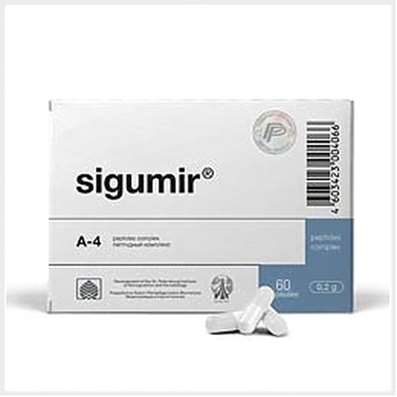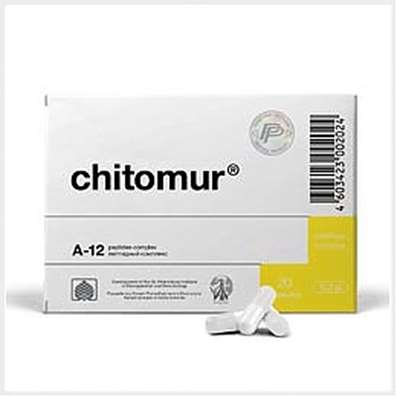Instruction for use: Aviamarin
I want this, give me price
Active substance Dimenhydrinate
ATX code R06AX Dimenhydrinate
Pharmacological group
H1 antihistamines
Nosological classification (ICD-10)
H81 Violations of the vestibular function
Vestibulopathy, Labyrinth-vestibular disorders, Cochleovestibular syndrome, Vestibular disorder, Vestibular abnormalities, Vertigo labyrinth origin, Disturbance of microcirculation in the maze, Cochleo vestibular disorder, Cochleo-vestibular violation of ischemic nature, Disorders of the vestibular apparatus
H81.0 Meniere's Disease
Meniere's disease / syndrome, Meniere disease, Meniere's Syndrome, Labyrinth dropsy, Endolymphatic dropsy
H83.2 Labyrinth dysfunction
Labyrinth disturbance, Labyrinth Disruption, Labyrinth-vestibular disorders, Labyrinthopathy
R11 Nausea and vomiting
Postoperative vomiting, Nausea, vomiting, Vomiting in the postoperative period, Vomiting drug, Vomiting on the background radiation therapy, Vomiting indomitable, Vomiting with radiation therapy, persistent vomiting, anacatharsis, Postoperative nausea, Vomiting during chemotherapy, Vomiting of central origin, Vomiting on the background of cytostatic chemotherapy, persistent hiccups, repeated vomiting
R42 Dizziness and dizziness
Vertigo, Dizziness, Dizziness and nausea during travel on transport, Balancing disorders, Vestibular disorder, Infringements of balance, Ischemic impairment of hearing and balance
T75.3 Motion Slewing
Movement Disease, Disease of the air, Marine Disease, Kinetosis, Airsickness, Seasickness, Swaying, Symptoms of motion sickness, Kinetosis, The motion sickness syndrome
Composition
Tablets 1 tab.
active substance:
Dimenhydrinate 50 mg
excipients: MCC; Povidone (Kollidon 30); crospovidone; mannitol; colloidal silicon dioxide (aerosil); magnesium stearate
Description of the dosage form
Tablets are round, flat-cylindrical, white or almost white in color with a chamfer and a cross-shaped risk.
pharmachologic effect
Pharmacological action - antiemetic, H1-antihistamine.
Pharmacodynamics
Blocks histamine H1 receptors and CNS m-cholinergic receptors. It inhibits the vestibular apparatus of the inner ear, acting primarily on the otoliths, in high doses - on the semicircular canals. It has an antiemetic, anorexigenic, sedative effect, eliminates dizziness.
Pharmacokinetics
After ingestion, dimenhydrinate is well absorbed and distributed to organs and tissues. The effect of the drug appears after 15–30 minutes and lasts for 3–6 hours. About 78% of dimenhydrinate binds to plasma proteins. Dimenhydrinate is metabolized in the liver and is almost completely excreted in the urine within 24 hours. Small amounts are excreted in breast milk. T1 / 2 of dimenhydrinate is about 3.5 hours.
Indications
motion sickness (sea, car, air);
prevention and treatment of symptoms of vestibular and labyrinth disorders (dizziness, nausea, vomiting), with the exception of symptoms caused by antitumor therapy;
Meniere's disease.
Contraindications
hypersensitivity to the drug;
epilepsy;
acute exudative and vesicular dermatoses;
pregnancy (I term);
breastfeeding period.
With care: convulsive syndrome; angle-closure glaucoma; prostatic hyperplasia; bronchial asthma; cardiovascular diseases; hyperthyroidism; stenotic peptic ulcer; pyloroduodenal obstruction and bladder neck obstruction.
pregnancy and lactation
The use of the drug in the II – III trimester of pregnancy is possible only if the expected benefit to the mother outweighs the potential risk to the fetus. Use of the drug in the first trimester of pregnancy and during breastfeeding is contraindicated. At the time of treatment should stop breastfeeding.
Side effects
Parameters of the frequency of occurrence of side effects: very often (≥1 / 10); often (≥1 / 100, <1/10); infrequently (≥1 / 1000, <1/100); rarely (≥1 / 10000, <1/1000); very rarely (<1/10000); unspecified frequency.
On the part of the blood and lymphatic system: very rarely - hemolytic anemia, agranulocytosis, neutropenia, leukopenia, thrombocytopenia or pancytopenia.
On the part of the immune system: rarely - anaphylactic shock.
Psychiatric disorders: often - changes in mood, anxiety, constraint of movements; infrequently - insomnia.
On the part of the nervous system: often - drowsiness; infrequently - imbalance, weakened concentration and memory impairment (more often in elderly patients), tremor, lack of coordination, confusion, hallucinations; rarely - headache, sleep disturbance, dizziness, orthostatic hypotension; very rarely - paradoxical stimulation of the central nervous system (especially in children).
On the part of the organ of vision: rarely - glaucoma, vision problems (dilated pupil, blurred vision or a split image).
On the part of the organ of hearing and labyrinth disorders: rarely - tinnitus.
From the side of the heart: rarely - rapid heartbeat, tachycardia and hypotension.
On the part of the respiratory system, organs of the chest and mediastinum: often - nasal congestion.
On the part of the digestive tract: often - dry mouth, constipation, diarrhea, nausea, abdominal pain.
On the part of the liver and biliary tract: unspecified frequency - impaired liver function (cholestatic jaundice).
On the part of the skin and subcutaneous tissues: rarely - rash, redness.
On the part of the kidneys and urinary tract: often - a violation of urination (urinary retention due to anticholinergic action).
General disorders and disorders at the injection site: rarely - edema (less often - angioedema).
If any of the side effects indicated in the description are exacerbated or the patient has noticed any other side effects that are not listed in the description, you should inform your doctor.
Interaction
Enhances the effects of atropine, tricyclic antidepressants, catecholamines, barbiturates, alcohol, sedatives and hypnotics, neuroleptics, reduces the effect of corticosteroids, anticoagulants. Lowers the response to apomorphine. Reduces the depressive effect of acetylcholine on the heart muscle. Combination with bismuth, scopolamine, anesthetics and psychotropic drugs increases the likelihood of visual impairment. Incompatible with ototoxic antibiotics (streptomycin, neomycin, biomycin, amikacin, kanamycin), because may mask the symptoms of ototoxicity and contribute to the development of irreversible hearing loss.
Dosage and administration
Inside, before eating.
Diseases of movement (sea, automobile, air): adults and children over 12 years old - 1–2 table. 2–3 times a day; children from 3 to 6 years old - 1 / 4–1 / 2 table. 2–3 times a day; from 7 to 12 years - 1 / 2–1 table. 2-3 times a day.
Prevention and treatment of symptoms of vestibular and labyrinth disorders (dizziness, nausea, vomiting), with the exception of symptoms caused by antitumor therapy: adults and children over 12 years old - 1-2 tables. 2–3 times a day; children from 3 to 6 years old - 1 / 4–1 / 2 table. 2–3 times a day; from 7 to 12 years - 1 / 2–1 table. 2-3 times a day.
Meniere's disease: adults and children over 12 years old - 1-2 tables. 2–3 times a day; children c 3 to 12 years - 1 / 2–1 table. 2-3 times a day.
The maximum daily dose for adults should not exceed 7 table. For the prevention of kinetozov should be taken 1-2 table. 30 minutes before the trip. The duration of the drug and the possibility of repeating the course of treatment - in consultation with the doctor.
Overdose
Symptoms: dry mouth, nose and throat, redness of the face, slow and difficult breathing, confusion, in children - convulsions, hallucinations. If these symptoms appear, you should immediately consult a doctor.
Treatment: gastric lavage with a suspension of activated carbon (20–30 g), the appointment of a saline laxative (10–15 g of sodium sulfate), symptomatic therapy, with convulsions in children - phenobarbital (5–6 mg / kg), diazepam.
special instructions
Impact on the ability to drive vehicles and other mechanisms. Given the side effects, care should be taken when practicing potentially hazardous activities that require increased attention and speed of psychomotor reactions (including driving).
Release form
Tablets, 50 mg. 5 or 10 tables. in a blister strip packaging of PVC film and aluminum printed lacquered foil.
1, 2 blister packs are placed in a pack of cardboard.
Pharmacy sales terms
Over the counter.
Storage conditions
At a temperature not higher than 25 ° C.
Keep out of the reach of children.
Shelf life
50 mg tablets - 2 years.
50 mg tablets - 3 years.
Do not use after the expiration date printed on the package.

 Cart
Cart





